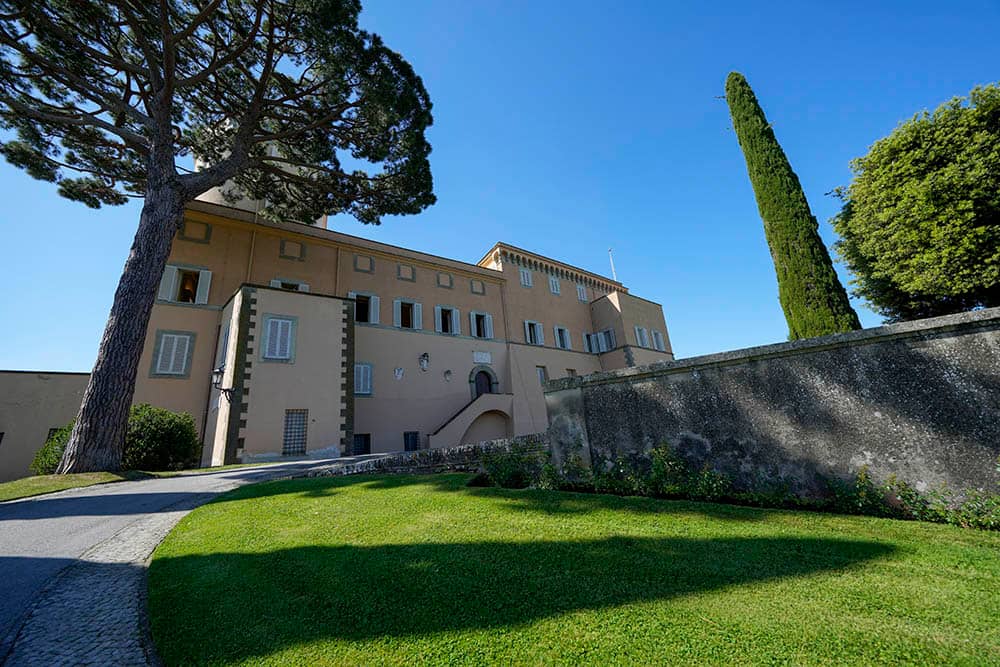ROME – Although a mini-tempest about Pope Francis’s conversation with an Italian journalist and what he did, or didn’t, say about Hell likely will be remembered as the biggest news cycle of Holy Week 2018, the pontiff said plenty of other things over the last week too, and it’s worth sorting through and pondering what to make of it all.
In total, Francis delivered six cornerstone addresses:
- A homily for the Holy Thursday Chrism Mass
- A homily for the Lord’s Supper Mass
- Prayers for the Good Friday Via Crucis procession
- A homily for the Easter Vigil
- A homily for the Easter Morning Mass
- The Easter Day Urbi et Orbi address
That, by the way, doesn’t count the homily at the Good Friday service, because it’s delivered by the Preacher of the Papal Household, not the pontiff himself. In all, that’s more than 6,000 words of papal verbiage in a 96-hour span, and, as always with Francis, it featured a little bit of everything.
In sum, what we got was a clear indication that Pope Francis is not backing off his cautious opening to Communion for divorced and civilly remarried Catholics expressed in Amoris Laetitia, and, beyond that, a fairly comprehensive statement of his broad vision and agenda.
Along the way, several of the pope’s key recurring themes came up, such as the importance of priests being close to their people at the Chrism Mass. We got blunt political commentary, such as the pontiff repeating his opposition to the death penalty while visiting Rome’s Regina Coeli prison to wash the feet of 12 inmates on Holy Thursday, calling it “neither human nor Christian.”
We heard echoes of Francis’s spirituality, such as his call for “holy shame” in the Good Friday meditation. As he often does, Francis also offered a personal revelation, telling the prisoners that next year he’s planning to have eye surgery to correct a problem with cataracts.
There were also splashes of Francis’s penchant for homespun pastoral language. On Easter Sunday, in explaining how God’s surprises get people moving in a hurry, he used the image of a housewife who hears something going on and runs to look, “leaving the potatoes on the stove … she’ll come back to find them burned!” We got touches of the pope’s sense of humor too, when he said you know a priest who never has time for his people when they address him by saying, “Father, I know you are busy.”
However, if we’re looking for the one speech that seemed to best capture the spirit and overall vision of Francis’s papacy – perhaps the speech that best reflects what kind of “reform” Francis is trying to deliver – it came in Holy Week’s opening act, the traditional Chrism Mass commemorating the institution of the priesthood by Christ.
It was largely a meditation on the importance of closeness, as both a spiritual and pastoral quality and also the hallmark of God’s relationship with humanity. Two paragraphs in particular seemed almost like hermeneutical keys to what Francis has been trying to engineer in Catholicism for the last five years:
“Closeness is also the key to truth; not just the key to mercy, but the key to truth. Can distances really be shortened where truth is concerned? Yes, they can. Because truth is not only the definition of situations and things from a certain distance, by abstract and logical reasoning. It is more than that. Truth is also fidelity. It makes you name people with their real name, as the Lord names them, before categorizing them or defining ‘their situation.’ There is a distasteful habit, is there not, of following a ‘culture of the adjective’: this is so, this is such and such, this is like… No! This is a child of God. Then come the virtues or defects, but [first] the faithful truth of the person and not the adjective regarded as the substance.
“We must be careful not to fall into the temptation of making idols of certain abstract truths. They can be comfortable idols, always within easy reach; they offer a certain prestige and power and are difficult to discern. Because the ‘truth-idol’ imitates, it dresses itself up in the words of the Gospel, but it does not let those words touch the heart. Much worse, it distances ordinary people from the healing closeness of the word and of the sacraments of Jesus.”
What do we take away from that? To begin with the blindingly obvious, Francis is not contemplating any revision of the position taken in a now-famous footnote to Amoris Laetitia.
More broadly, what we get is a full-blown, oracular statement of Francis’s underlying aim: He’s determined to smash the “truth-idols” he believes have taken hold of both the Church and the wider world, fueling a judgmental “culture of the adjective” that always leads with someone’s failures rather their underlying “faithful truth.”
This idol-smashing drive accounts not only for Amoris, but so much else about this papacy – from the kinds of bishops Francis is appointing, to why he keeps talking to an Italian journalist with a history of playing fast and loose with his words, to his sidelining of Vatican departments which, over the years, have seen their roles precisely as defending “abstract truths,” such as the Congregation for the Doctrine of the Faith.
There is, of course, a towering irony here, which is that in Christian history, the iconoclasts generally have been the very fundamentalists and literalists Francis sees as the problem. What we have in Francis instead is the great Catholic iconoclast, not trying to tear down images from church walls, but abstractions from people’s minds.
Perhaps the central drama of his papacy, then, is whether the Christian appetite for abstraction will prove as surprisingly durable as icons have.















